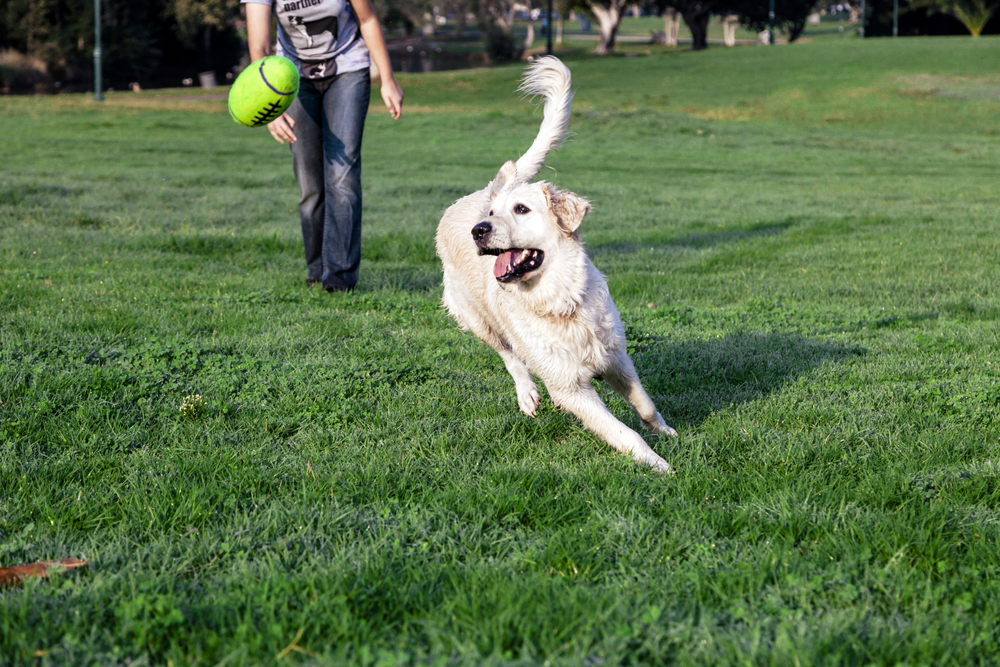The older pets live, the more likely they will experience cognitive dysfunction (i.e., a decrease in the brain’s ability to process information and perform normal tasks). Signs may begin as early as 10 years of age, and most pets older than 16 demonstrate at least one functional impairment sign. This syndrome in pets is often compared with Alzheimer’s disease in humans and can be similarly difficult for pets and their families. But, treatments can help. The Providence Vet team shares with pet owners the information they need about cognitive dysfunction syndrome in their four-legged friend.
What causes cognitive dysfunction in pets?
Researchers believe that a buildup of an abnormal protein, called beta-amyloid, is the main cognitive dysfunction cause in pets, and Alzheimer’s disease in humans. The proteins damage nerve fibers and slow normal nerve transmissions, which causes areas of the brain to shrink and creates learning, memory, and coordination difficulties. Affected pets may also have too much monoamine oxidase B, which reduces the number of neurotransmitters (e.g., dopamine or serotonin) available for effective communication between brain cells and body areas.
What are cognitive dysfunction signs in cats?
In cats, cognitive dysfunction signs can overlap significantly with other diseases, including hyperthyroidism, high blood pressure, kidney disease, or arthritis. Cats may inconsistently use the litter box, but many other problems can be the cause. They also tend to vocalize more, especially in the middle of the night, and seek more attention from their owners. They may become confused, such as getting lost in the house and forgetting their daily routine, sleep more often throughout the day, and show more anxiety.
What are cognitive dysfunction signs in dogs?
Cognitive dysfunction has been more thoroughly researched in dogs than cats, and six main signs have been identified:
- Disorientation
- Altered social interactions
- Sleep-wake cycle changes
- Problems with housetraining and other learned behaviors
- Activity alterations
- Increased anxiety
Some studies have shown that dogs eventually diagnosed with cognitive dysfunction were also more likely to experience tremors and visual or smell impairments, and to fall frequently. Affected dogs may become socially withdrawn, forget familiar people, and pant or pace frequently.
How is cognitive dysfunction diagnosed in pets?
No test can officially diagnose cognitive dysfunction. Instead, veterinarians make this diagnosis only after excluding all other possible causes, since many diseases associated with aging can mimic or exacerbate cognitive dysfunction and they must be identified and treated first. Blood, urine, and imaging tests, such as X-rays and ultrasound, are first-line diagnostics, and an MRI of the pet’s brain can rule out conditions such as a brain tumor or other primary brain disease. Consulting with a neurologist can help some pets.
Can treatments reverse cognitive dysfunction in pets?
Treatments cannot reverse cognitive dysfunction syndrome—unfortunately, this disease is almost always progressive. Treatments can temporarily alleviate symptoms and significantly improve quality of life for some pets, sometimes for the rest of their life, while others eventually decline until they require humane euthanasia. Each pet’s timeline is different.
The main treatment available for dogs is selegiline, an antidepressant drug that reduces monoamine oxidase in the brain and improves symptoms in about 70% of affected dogs. However, selegiline reacts poorly with many drugs, so pets taking multiple medications may be poor candidates. Other options for dogs and cats include anti-anxiety medications, supplements (e.g., melatonin to help regulate sleep), omega-3 fatty acids, and prescription diets rich in antioxidants. A strict daily routine that includes exercise and mental stimulation, such as training or play, will also help most pets.
Can I prevent my pet from developing cognitive dysfunction?

Research shows that pets who live a sedentary, primarily indoor, lifestyle are more likely to develop cognitive dysfunction. Regular daily exercise seems to benefit brain health and help stave off cognitive decline, while ongoing mental stimulation in the form of training or play also helps maintain brain function—and yes, you can teach an old dog, or cat, new tricks!
Research into human dementia is ongoing—as new causes and treatments are discovered for people, dogs and cats may also benefit. Until more is known about this common aging disease, you can help your furry friend by adjusting your household and routine, feeding a diet rich in healthy fats and antioxidants, and continuing to care for their routine medical needs. If you suspect your pet is suffering from cognitive decline, anxiety, pain, or other age-related conditions, contact The Providence Vet team to schedule a visit and consultation.






Leave A Comment